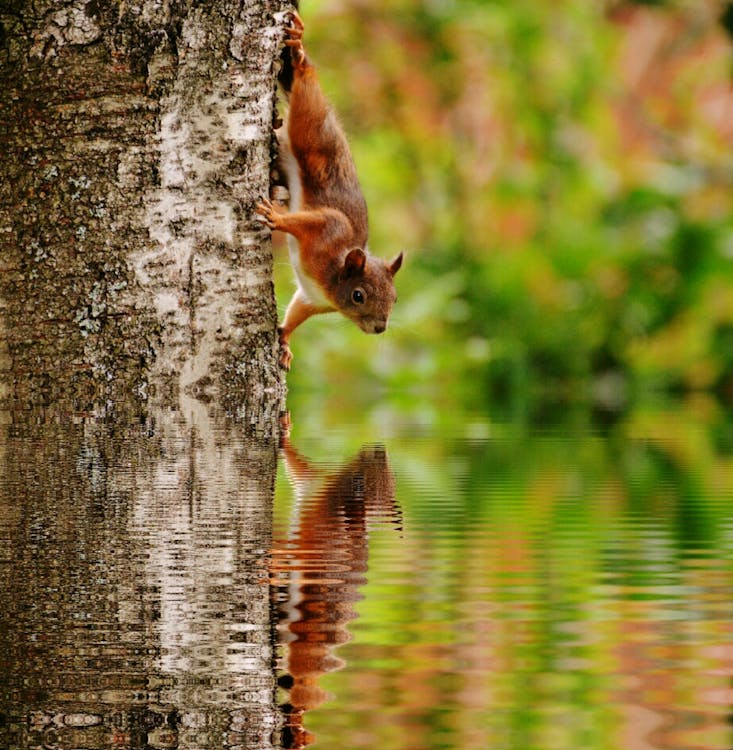You ever wonder why some say that the truth is far more confusing than fiction? Well, because it’s true. As we all know, the world hides many secrets and has done and shown some pretty incredible things that no one thought possible. So, let’s take a look at some weird, but true facts, shall we?
- The origin of bubble wrap
It was originally intended to be wallpaper, as the engineers Alfred W. Fielding and Marc Chavannes tried to sell it that way. It took them 3 years before they realised that it could be used for protection in packaging instead.
2. Iceland believes in elves
Well, okay, not everyone in Iceland. But the majority does. 62% of Icelanders believe in real-life elves. The country’s elf history dates back to Viking-era poems from around the year 1000. Icelanders believe they look like humans and can range in size.
3. Paper bags and plastic bags
A never ending fight between these two materials: which one is worse for the environment? Well, it appears to be the paper one. Of course, plastic is just as bad, but so are paper ones. The production emits 70% more pollution, uses 4 times as much energy and takes more time to break down, when compared to plastic bags.
4. Route 66 plays a song
When you drive over a quarter-mile stretch of Route 66 between Albuquerque and Tijeras, grooves added in the road will play music when someone drives over them. Though, only when going the speed limit of 45 mph. They work like rumble strips and when you drive over them, you can clearly hear ‘America the Beautiful’ play through the vibrations in your wheels.
5. Pink and purple lakes
Lake Hillier is known for its vibrant pink colour, which is caused by the presence of the algae Dunaliella salina. Oh, where you can find this lake? It’s on the edge of Middle Island, off the coast of Western Australia. The algae causes the lake’s salt content, creating a red dye. Oh, and it’s safe to swim in, don’t worry about that. Hillier also has a purple-ish lake sibling. It’s called hutt Lagoon, in Port Gregory on Western Australia’s Coral Coast.

6. Tea bags weren’t supposed to exist
New York tea merchant Thomas Sullivan sent samples of tea leaves to some of his customers in small silken bags. They assumed that it was supposed to be used as we use them now: putting the entire bag into the teapot. Though, Sullivan meant for people to empty out its contents. Later on, his sachets made of gauze – and later paper – included the string with the tag hanging over the side, making it easy to remove.
7. Crying makes happy
Studies suggest that crying stimulates the production of endorphins. It’s our body’s natural painkiller and feel-good hormones, like oxytocin. So, long story short: crying more is said to lead to smiling more.
8. London tomb is a secret time machine
London’s Brompton Cemetery is the final resting place of Hannah Courtoy who was deeply invested in ancient Egyptians’ astrological and had lots of wisdom about it. She’s buried there with two of her daughters in a massive 20-foot granite mausoleum. It includes a pyramid peak and a bronze door, decorated with Egyptian hieroglyphs. The entryway features a keyhole, but the key that should unlock it is lost. Seeing as no one can go in, people say it isn’t a tomb at all, but a time machine. And well, some believe it’s a teleportation chamber.
9. Bumblebees and their flying ability
Some find it impressive that humans can make it to the top of Mount Everest, but you’ll be surprised to learn that bumblebees can make it to the top too, and fly even higher than that. They’re able to fly at more than 29,525 feet (9000 meters, which is higher than Everest).
10. Moonbows exist
We all know that rainbows exist, but moonbows do too. Sure, they’re quite unusual, but they’re caused by the reflection, refraction and dispersion of light. It most often happens in places with waterfalls and mist and are also called lunar rainbows. Oh, and there needs to be a near full moon. Otherwise there won’t be enough light for you to see it.

11. Pink dolphin
Yes, you read that right, there’s a pink dolphin on earth. There’s a bottlenose dolphin named Pinky living in Louisiana. She was first spotted in 1998 by a boat captain named Erik Rue. The reason why the dolphin is pink, is most likely the result of a rare genetic condition.
12. Meteor explosion that everyone missed
There was a meteor that hit our atmosphere on December 18, 2018. It exploded with a force that was 10 times the energy of the Hiroshima atomic bomb. However, it wasn’t discovered by NASA scientists until after the ‘blast.’ It was largely undetected as it took place over the Bering Sea.
13. England’s queen owns swans
It’s written in the British law; any unclaimed swan swimming in the open waters of England and Wales, belongs to the Queen. This law originated in medieval times when swans were a delicacy for the wealthy people. Queen Elizabeth II upholds a centuries-old tradition with them; every year, during the third week of July, all swans in the River Thames are counted for the Queen. It’s called Swan Upping.
14. Cloud’s weight
We all think that clouds are light and fully, but they’re not. It appears that a cloud weighs about 1,1 million pounds. How did they find that out, you may ask? Well, they calculated that number by taking the water density of a cloud, multiplying it by its volume. How the cloud can float? Well, the air below is even heavier.
15. Shakespeare’s curse
William Shakespeare died on April 23, 1616 and was buried in a tomb that featured an epitaph meant to ward off grave robbers. It states: ‘Good friend, for Jesus’ sake forbear / to dig the dust enclosed here / blessed be the man that spares these stones / and cursed be he that moves my bones.’

16. Dentist’s inventions
There are two things known to be invented by a dentist: the electric chair and cotton candy. The electric chair was first used in 1890 after being invented by Alfred P. Southwick, whereas cotton candy was invented in 1897 by dentist William Morrison and confectioner John C. Wharton. They introduced it in 1904 as Fairy Floss, to which dentist Josef Lascaux renamed it as cotton candy.
17. The origin of sunglasses
Sunglasses were originally made out of smoky quartz in the 12th century in China. They were used by judges to mask their emotions and hide their facial expressions when they were questioning witnesses.
18. Pringle’s inventor burial place
Fredric Baur developed the idea of stacking crisps (chips) in a can instead of tossing them in a bag. All of that happened in 1966. so, when he died, he asked his family to be buried in a Pringles can.
19. Bones in our feet
There are 26 bones in each foot, meaning a total of 52 in both. Out of 206 total bones in our whole body, it’s more than 25% (one quarter). It may sound crazy, but when you think about it, it sounds logical. Our feet support our weight and allow us to jump, run and climb. It also allows us to absorb and release energy efficiently. It’s one of the reasons we can outrun any other animal in an endurance race.
20. Spider webs and their original use
In ancient Greece and Rome, doctors used spider webs to create bandages for their patients. They have natural antiseptic and antifungal properties, which can help keep wounds clean and prevent infections. They’re also rich in vitamin K, which helps promote clotting.

21. Squirrels and power outages
Squirrels are the most frequent cause of power outages in the U.S. The peak times of the year for squirrel attacks are from May to June and October to November. They cause problems by tunneling and chewing through electrical insulation.
Love, Deem ❤
You can also follow me on Facebook, Twitter, Instagram and Twitch
Image source: Pexels

I need to see the pink dolphin and lake. I love pink!
LikeLiked by 1 person
I don’t but I do agree with your first sentence haha
LikeLike
I knew cotton candy was invented by someone who wants to profit indirectly from it. Oh the scumbag!
LikeLiked by 1 person
Haha I know right?!
LikeLike
So interesting! I didn’t know most of these tbh
LikeLiked by 1 person
Now you do! 😉
LikeLike
I love facts 😀
LikeLiked by 1 person
As do I!
LikeLike
Who knew squirrels could be such rebels xd
LikeLiked by 1 person
Haha who knew 😉
LikeLike
Is that what sunglasses were originally made for? Quite a find I’d say haha
LikeLiked by 1 person
Haha I was just as surprised as you are!
LikeLike